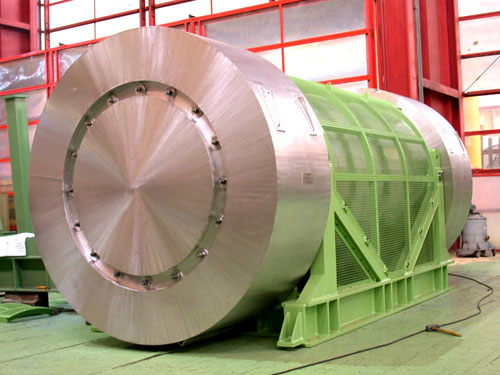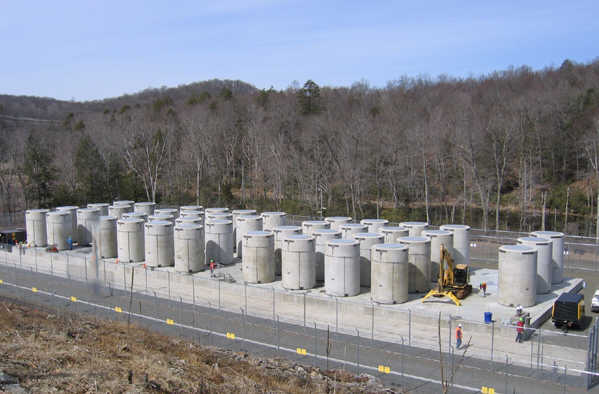NAVIGATION

Spent Nuclear Fuel (SNF) Status & Challenges:
In 2021, the Energy Information Administration (EIA) reported there were 93 operating power reactors at 55 sites in 28 states. In addition, there are 21 shutdown reactors at 18 sites. Combined, they have more than 86,000 metric tons of commercial spent nuclear fuel (SNF) in storage. Roughly 2,000 metric tons of additional spent fuel is generated each year. Final disposal of this SNF is the federal government’s responsibility per the Nuclear Waste Policy Act.
In the 1980s, all nuclear power plants signed contracts with the federal government to take title to the fuel, and transport it to a safe and secure disposal site for final disposition. The nuclear power plants paid for this service with a surcharge on their electric bills. Money from that surcharge was turned over to the federal government’s nuclear waste fund, NWF. At the end of 2019, the NWF had $40.4 Billion in remaining assets. The federal government was contractually obligated to begin disposal services for SNF in 1998. The government’s failure to deliver on this obligation resulted in a partial breach of contract determination by the courts. Each utility operating nuclear power plants has developed independent settlements with the federal government based on that legal outcome. Ongoing storage of SNF that should have been disposed is now paid for by taxpayers. Annual costs for this storage are charged to taxpayers at the rate of ~$500 million per year.
According to the federal government’s General Accounting Office, the annual operating cost for dry storage facilities billed to taxpayers is $350,000 at a site where an NPP is still operating. The annual operating costs to taxpayers at sites where the NPP has been shut down averages $6.5 million/site. At the end of 2020, 22 reactors were permanently shut down. Most of these closures are economically driven, mostly by the low cost of power produced by natural gas fired power plants. The high cost to taxpayers and the expanding liability of nuclear waste is now generating considerable attention for a range of SNF management alternatives. These include consolidated storage of SNF at either commercial, or government owned facilities, alternative SNF disposal sites and technologies and even consideration of reprocessing of SNF to reduce its volume and toxicity.
All of these SNF management options require significant transportation infrastructure and operational capabilities that don’t currently exist. All of these options will require detailed outreach and consultation with stakeholders, particularly if selection of facility sites are consent based. Thorough knowledge of existing law, economics and available technology are necessary as the private sector considers potential business models for managing these wastes. RAMTASC offers unique insights into all aspects of SNF management. We can help identify the costs, applicable regulations, stakeholder concerns, and available technologies needed for each step of the process. RAMTASC can also help with Environmental Report preparation and organization. Contact RAMTASC if you are considering involvement In the back end of the nuclear fuel cycle.

There are many opportunities for increasing the effectiveness and efficiency of radioactive material management in this country. Each of these opportunities has technical, regulatory, environmental, economic and social challenges. Let RAMTASC help your company achieve its goals in this exciting environment. We offer a range of services described on our "What RAMTASC Does" link in the navigation pane above. Check out our capabilities, experience and products. Then contact RAMTASC to see how we can help map your path to success in the world of spent nuclear fuel and high level radioactive waste management.





